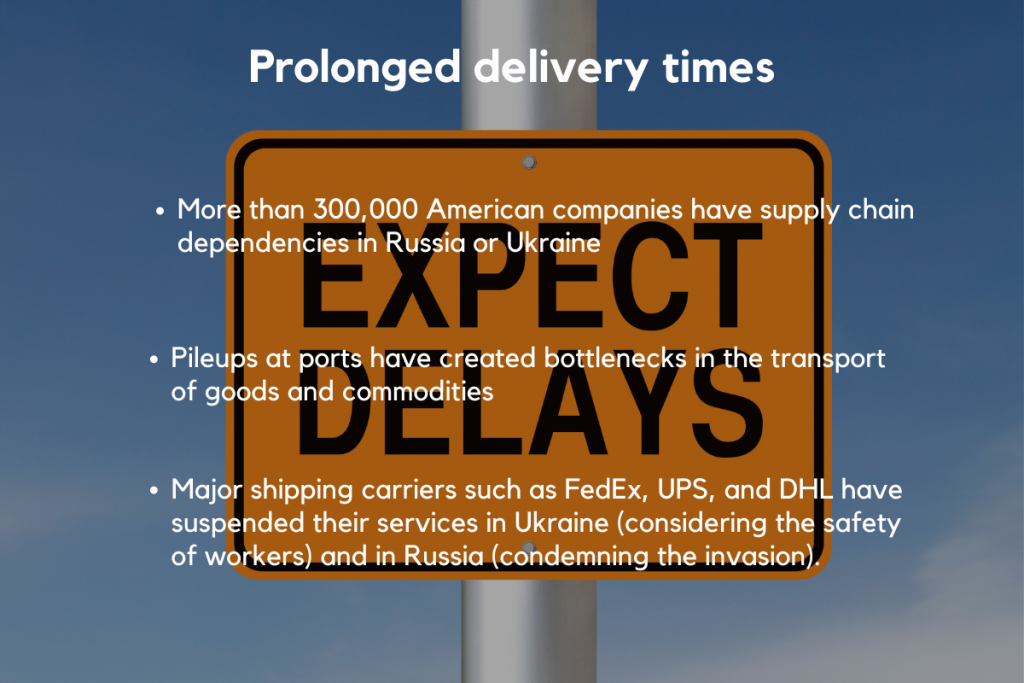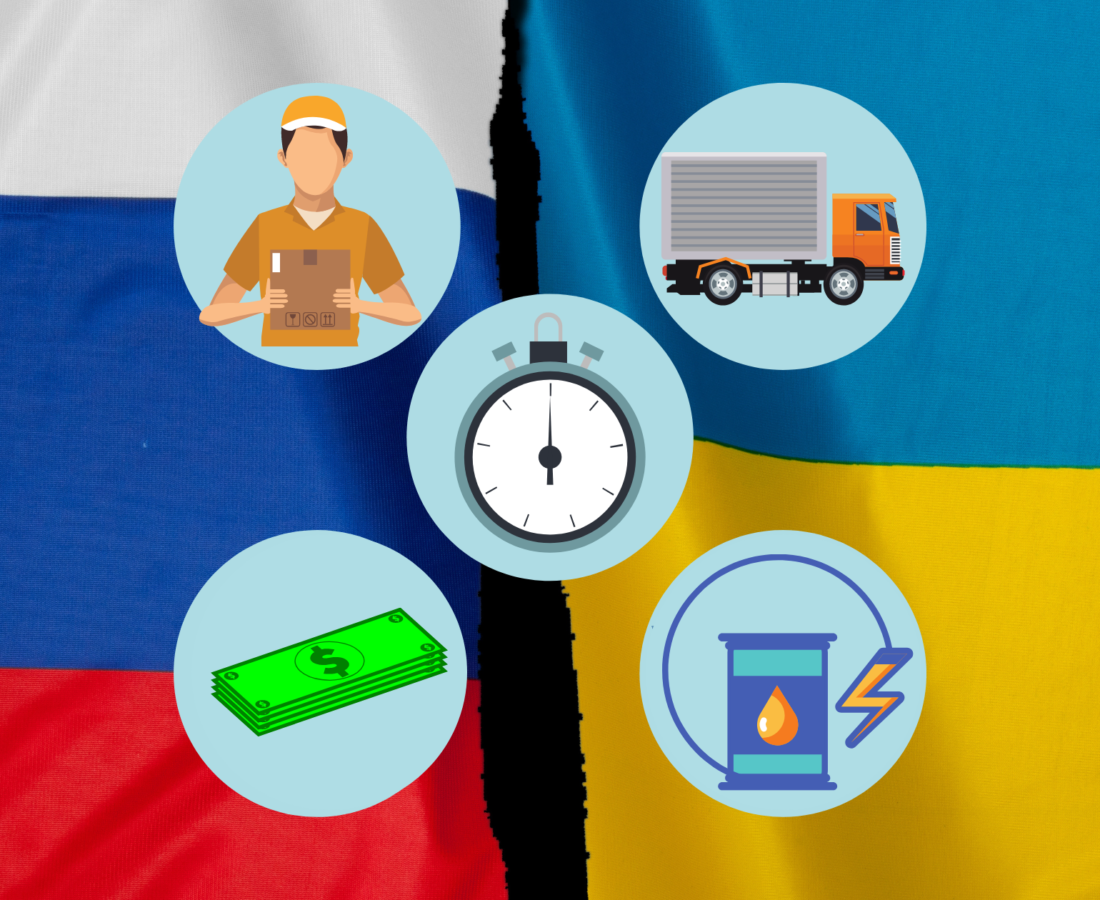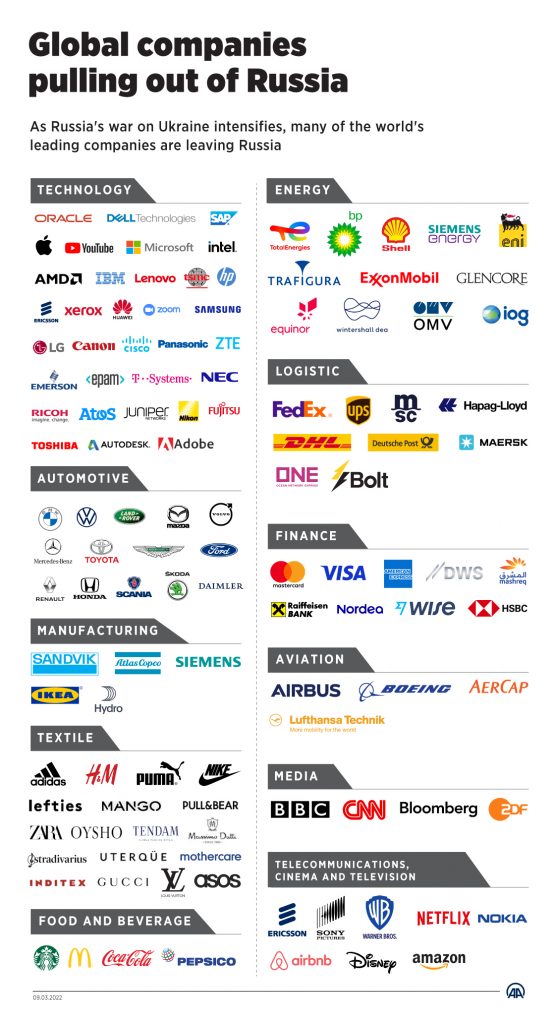The global supply chain has had a really wild time for the past couple of years. First came the pandemic, then came port logjams, and now we’re in the midst of the Russia-Ukraine war — adding more troubles to the existing chaos.
While different countries have conflicted with each other in the past, this full-blown Russian invasion of Ukraine is treated differently by the countries of the world, especially the U.S, since they tend to lose a lot more compared to the others.
How? you ask. Here’s how.
How the Russia-Ukraine War Has Impacted E-commerce and the Global Supply Chain
First of all, it is wise to understand that the supply chain has already been rattled since the pandemic. And when prominent countries like Russia and Ukraine are involved in a conflict, it is no surprise that the existing disruptions will continue or even get worse down the line.
We saw how the supply chain crisis that happened last year already caused a mild economic disruption by holding off important holiday season gifts at ports. Now imagine the same but with an essential good like fuel. That’s exactly how worse the situation is right now.
Let’s take a look at the impact in detail.
Inflation
To run the supply chain, you need oil. And one of the major producers of oil and natural gas is, well, Russia. Therefore, the geopolitical conflict has skyrocketed the prices of both in recent weeks.
The effect of this inflation?
Mobility service providers such as Lyft and Uber are adding temporary fuel surcharges to fares for ride-hail and deliveries as fuel prices around the U.S rise.
In the U.S., the average price per gallon was $4.69 on March 14, 2022, according to USA Today.

Oil and gas prices are set to spike further as the Russia-Ukraine crisis escalates, but the impact on energy won’t be the only ramification.
There’s wheat, which Russia and Ukraine together make up nearly 30 percent of global export used in basically everything from Bread, Pasta, and packaged food for people, especially in Europe, North Africa, and the Middle East. A snowball effect increasing these food prices further increases the risk of social unrest in poorer countries.
The United States imports relatively little directly from Russia, but a commodities crunch caused by a conflict could have knock-on effects that at least temporarily drive up prices for raw materials and finished goods when much of the world, including the United States, is experiencing rapid inflation. – The New York Times.
Shortages
The U.S primarily imports materials such as Xenon, Palladium, Neon, Aluminum, etc. substantially from Russia and Ukraine. Companies dealing in car manufacturing, semiconductors, catalytic converters, etc could all face serious shortages.
Such shortages could lead to
- Companies selling their produce at a higher rate to meet their usual ends
- Increased shipping and freight costs (flights and cargo from Europe and Asia taking alternate and longer routes to avoid Ukraine and Russia) and
- Lower purchases from customers due to the sudden inflation
And ultimately result in economic disruption.
Responses from major companies
Companies were not only forced to deal with the supply chain crisis that resulted from the war, certain companies willingly took the risk of putting a hold on their business activities primarily in Russia and also in countries such as Ukraine and Belarus.
Not just corporations, even nations such as the U.S. and Canada have banned Russian oil and gas imports, and the U.K. is moving in the same direction. The governments behind these decisions believe that the actions can put meaningful pressure on Russia to end the war on Ukraine.
Issues That E-commerce Businesses Are Prone to Face as a Result of the Russia-Ukraine War
The e-commerce impact of the conflict between Russia and Ukraine may not be limited to that region. For one, the conflict is driving inflation rates higher, which could decrease the flow of e-commerce shipments through supply chains due to their cost.
Interos, a U.S.-based supply chain management firm, estimates that more than 300,000 American companies have supply chain dependencies in Russia or Ukraine.
As we mentioned earlier, the Russia-Ukraine war hit an already crippled supply chain from the pandemic. Therefore, consequences are bound, even if you don’t have Tier-1 or Tier-2 suppliers in Russia and Ukraine.
If the war worsens or even comes to an impasse, there definitely will be key issues supply chain leaders and e-commerce businesses will have to deal with. Here are some of them.
1. Prolonged delivery times

The first and foremost issue for e-commerce businesses is their shipments reaching their customers’ doorstep late because of a conflict happening some 5000 miles away.
Due to packages being held off citing the suspension of services in parts of Ukraine and Russia, there has been an increase in delays which, under the prevailing situation, can make it difficult for your business to deal with already panic-stricken customers.
Thanks to the war, the pileups at ports have created bottlenecks in the transport of goods and commodities and threatening fresh economic disruptions for countries and businesses, especially near Ukraine and Russia (or dependent on them). Adding to this disruption is logistics firms suspending services as a sign of taking a stand.
FedEx over the weekend said in a statement on its website that the company is “closely monitoring the situation” and that it has “contingency plans in place, including temporarily suspending services in Ukraine, Russia, and Belarus until further notice.”
“Our focus is on the safety of our people, providing continued service, and minimizing disruption to our customers. UPS continues to closely monitor the situation and will re-establish service as soon as it is practical and safe to do so,” UPS said in a statement after disrupting service.
Similar to FedEx and UPS, The German logistics company Deutsche Post, DHL has said that they are suspending the delivery of goods and documents to Russia and Belarus amid the rising tensions in Ukraine due to the Russian invasion. As per a message on the company’s website, the reception of parcels in both countries has been suspended until further notice.
2. Surging shipping costs


If delays don’t seem to be enough, imagine your worries when you realize that you’ll probably be paying skyrocketing shipping prices for them.
FedEx Express notified customers on Thursday that it will hike its peak surcharge for many international parcels and freight shipments, beginning next week, because of the latest supply chain disruptions caused by the Russian invasion of Ukraine.
This surcharge is unofficially named ‘War surcharge’ by retail pundits due to the news of the fee coming nearly a week after the disruption in Europe, particularly around Ukraine and Russia.
Due to continuous disruptions in the global supply chain, air cargo capacity remains limited. We are incurring incremental costs as we continue to adjust our international networks and operate in this constrained environment. – FedEx
FedEx is increasing the surcharge by 20 to 30 cents per kilogram for most of Asia-Pacific and by a tenth of a euro, or 11 cents, per kilogram on European exports and imports. Increases also apply in the Indian subcontinent, Africa and Latin America, according to their tariff schedule.
But in these tough times, we definitely cannot blame the shipping carriers, who themselves are straining capacity amidst this whole crisis. The fuel cost increase is passed along the supply chain to the carriers and finally ends up hurting your bottom line.
While all of this may seem like a worry, don’t let your hopes down. There are measures that you can take to counter the crisis. Understand what they are and make sure that you are least affected by them.
What Businesses Can Do to Overcome Disruptions and Reduce Risks
Experts have some suggestions for growing businesses such as yours to overcome this disruption:
- Encourage customers to start shopping early as weeks to avoid last-minute delays on their orders
- Provide a realistic estimated delivery date of delivery even before customers make their purchase so that they become aware of the crisis and refrain from blaming you in case the delivery timeline gets extended
- Track your parcels in real-time and gain the ability to take preemptive action before customer impact
- Keep your customers in the loop of their orders via tracking information across post-purchase touchpoints to avoid getting blamed for delays that are no fault of yours.
Bottom line
From the experts’ point of view, the past stands for an unprecedented issue, the present stands at the Russia-Ukraine war situation getting worse before it gets better, and the future is the calling out of the existing logistics operations model.
The supply chain and logistics system will not and should not revert to the original model that existed during the pre-pandemic times as the current scenario calls for desperate measures in the form of modernization.
As of now follow the experts’ advice, keep yourself updated on the changes to the supply chain, and hope for the situation to get better or ‘normalize’ if there were such a thing.









